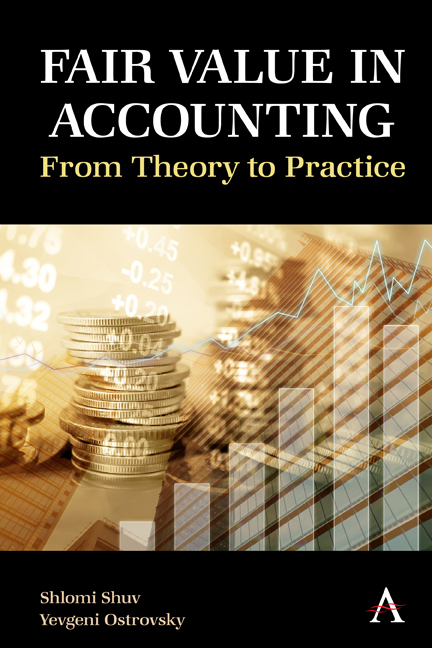Book contents
- Frontmatter
- Contents
- Preface
- Chapter 1 Background
- Chapter 2 Definition and Scope of Fair Value
- Chapter 3 Identifying the Asset or Liability to Be Measured
- Chapter 4 Determining the Market in Which the Transaction Will Take Place
- Chapter 5 Identifying Market Participants
- Chapter 6 Defining the Transaction Price
- Chapter 7 Definition of an Orderly Transaction
- Chapter 8 Fair Value at Initial Recognition
- Chapter 9 Application to Nonfinancial Assets
- Chapter 10 Measuring Fair Value of Liabilities and Equity Instruments
- Chapter 11 Application to Financial Instruments with Netting Positions
- Chapter 12 Valuation Techniques
- Chapter 13 Disclosure Provisions
Chapter 8 - Fair Value at Initial Recognition
Published online by Cambridge University Press: 15 September 2022
- Frontmatter
- Contents
- Preface
- Chapter 1 Background
- Chapter 2 Definition and Scope of Fair Value
- Chapter 3 Identifying the Asset or Liability to Be Measured
- Chapter 4 Determining the Market in Which the Transaction Will Take Place
- Chapter 5 Identifying Market Participants
- Chapter 6 Defining the Transaction Price
- Chapter 7 Definition of an Orderly Transaction
- Chapter 8 Fair Value at Initial Recognition
- Chapter 9 Application to Nonfinancial Assets
- Chapter 10 Measuring Fair Value of Liabilities and Equity Instruments
- Chapter 11 Application to Financial Instruments with Netting Positions
- Chapter 12 Valuation Techniques
- Chapter 13 Disclosure Provisions
Summary
Does the Transaction Price Represent the Fair Value?
Under International Financial Reporting Standards (IFRS) and US Generally Accepted Accounting Principles (US GAAP), certain standards stipulate that assets or liabilities should initially be measured at fair value (or on the basis of fair value plus transaction costs). This applies particularly to financial instruments but also to assets or liabilities that are recognized in a business combination. Under IFRS, however, a day 1 gain or loss on a financial instrument is recognized only when the fair value of that instrument is evidenced by observable inputs or market transactions.
One of the basic questions IFRS 13 and Accounting Standards Codification (ASC) 820 deal with in this context is whether it is conceptually possible that the fair value at initial recognition will be different than the transaction price. The answer to that question is that the definition of fair value is based on the exit price, whereas the transaction price is an entry price. In other words, there are certainly circumstances in which the entry price will not equal the exit price, and the Illustrative Examples provided by the Standards even clarify explicitly that the Standards do not purport to suggest such a presumption. Statement of Financial Accounting Standard (SFAS) 157's Basis for Conclusions stated clearly that the fact that no such presumption exists was a departure from US GAAP Concepts Statement 7, which stated that cash and cash equivalents paid or received are usually assumed to approximate fair value in the absence of evidence to the contrary. On the other hand, the Standards note that, in many cases, the transaction price will, indeed, equal the exit price and will therefore also represent the fair value of the asset or liability (e.g., that might be the case when the transaction to acquire an asset takes place in the market in which the asset would be sold). Therefore, reporting entities should exercise judgment in order to determine whether the transaction price represents the fair value.
- Type
- Chapter
- Information
- Fair Value in AccountingFrom Theory to Practice, pp. 67 - 72Publisher: Anthem PressPrint publication year: 2022

